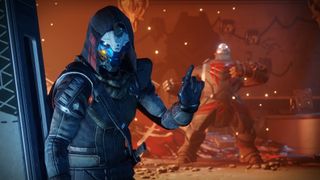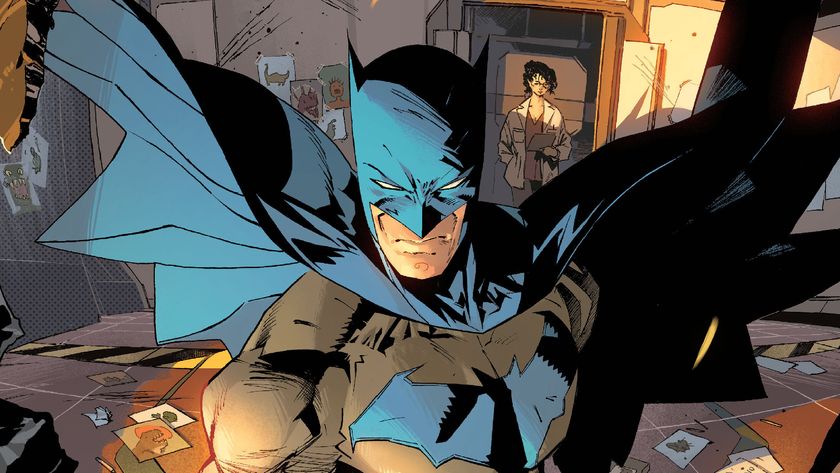How Bungie stripped away the first game’s complexity to make a Destiny 2 for everyone
Inscrutable systems, complex economies, and the endless need for Reddit. The demanding Destiny hallmarks that inspired a much smoother sequel.
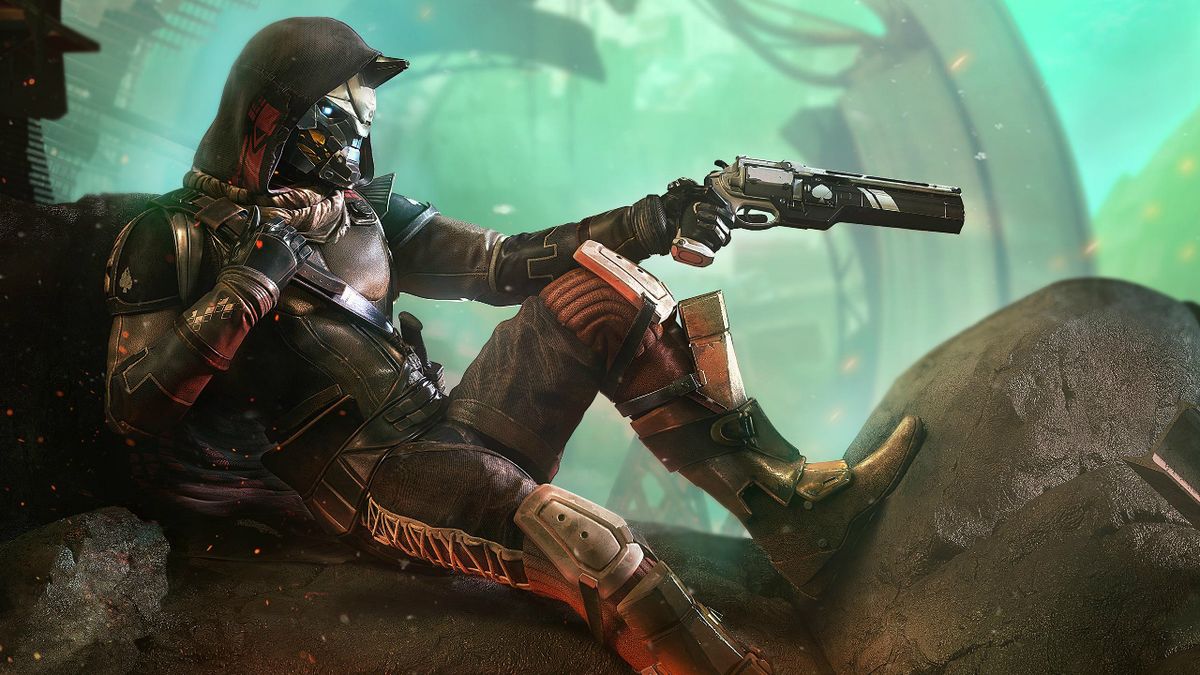
“It was kind of inscrutable, right? Especially if you didn’t go on the journey starting in 2014...”
So says Destiny 2 project lead Mark Noseworthy, as we sit down to talk about the lessons Bungie learned from its three years spent running the first game. And indeed, Destiny was not the most approachable game. As a friend of mine rather wonderfully surmised it on the night of our last Raid, 24 hours before Destiny 2 launched, she was a good beast, sometimes cruel, but always beautiful. But damn, was she demanding.
Commit to Destiny, give your time and head-space over to it for enough hours a week, and do a little light restructuring of your life to accommodate its needs, and in return it would show you boundless wonders. There were the Hard mode Raid victories, week-long commitments whose relentless requirements of dexterity, co-operation, and in-the-moment, improvisational heroism have seen other members of my Destiny circles discuss their completion in terms of post-coital exhaustion. There was the discovery of clever, intricate, high-level character builds, their secret superpowers hidden in plain sight, until pieced together like a jigsaw.
And running through everything were the mythical, experimental interplays of cross-character weapons and abilities which, if implemented with canny co-ordination by well-organised teams, could turn three Guardians into a single unit of hilarious, Mjolnir-like power. Put the work in, commit to honing, discovering, learning, and harnessing Destiny’s hidden depths, and Destiny would give you the world. But not everyone could attain those heady heights, and often not through their own fault. And ultimately, that meant that Destiny 2 had to approach things differently.
All the possibilities, none of the confusion

- Essential Destiny 2 tips: The things we wish we knew before we started
- Destiny 2 Class Guide - should you pick Titan, Hunter or Warlock?
“If you were to just pick up [last Destiny expansion] Rise of Iron right now and play it for 30 hours where ‘I have 50 currencies, there’s all sorts of minutiae’, you’re really kind of lost, Noseworthy concedes. “You need a guide, you need a Sherpa, you need the internet to really enjoy the game.
“And so with Destiny 2 we were really trying to make a platform from the beginning where you didn’t need those things. Of course your experience can be enhanced by having guides on the internet, like on which Exotic weapon is the best, or this mode or whatever, but we really wanted that baseline, that foundation, to be solid and be something that could be easily recommended”.
Noseworthy hits the nail on the head with a 200 metre precision shot right there. Destiny, for all of its vast success, for every one of the 800 or so hours I ploughed into it, was a game I would recommend, but only while listing all of the caveats above. Destiny 2, as I conclude in my review, needs no such disclaimers, and it achieves that feat in unmistakably deliberate fashion. Because by Destiny 2, it seems that Bungie had come to understand that, although it was “building a game that we want to be people’s hobby”, the definition of what that meant had to be dictated by player, not studio.
Sign up to the 12DOVE Newsletter
Weekly digests, tales from the communities you love, and more
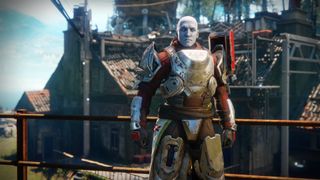
“For someone that’s ‘I’m going to play a couple of hours a week every week for the rest of my life’, Noseworthy explains. “And for someone [else] that’s like ‘I want to make this one of my primary forms of entertainment’, and that means we’re not just shipping a box that you buy and you play. And you can. You can have a great time with Destiny 2 just beating the campaign. Play some Strikes, play a bit of PvP here and there and say, “You know what? I’ve had a great time”, and then put it down.
“And we’re designing the game that way. But we’re trying to create something that you can come back to, and that means there’s a starting point. Shipping Destiny 2 was a marathon, but now the new race has just begun”.
Become legend, but do it on your own terms
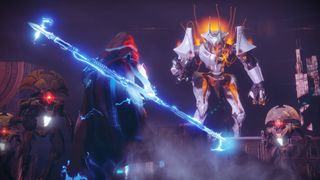
Throughout our conversation, it becomes clear that the navigability of that race, for all participants, from fun-runner to elite, is Bungie’s primary goal for Destiny 2. It wants everyone to see the route to their own chosen finish line, and for no-one to get lost down dark, confusing side streets, or stumble into dead-ends.
- How to level up fast in Destiny 2
- Destiny 2: How to get to Power level 280 (and beyond) while playing solo
Key to attaining that goal is the Token system, Destiny 2’s radical, single-solution overhaul to both currency and level progression. The first game’s three years took in a sometimes flabbergasting array of parallel but interconnected progress paths, which made character development a complex web of randomised gear accrual, careful activity choice, and the wrangling of multiple special items and currencies with which to fuel and optimise the development of both character and equipment. In Destiny 2, largely, the Token rules all.
Different variants are furnished on different planets and in different activities, but whatever you elect to do, you’ll get Tokens, and they’ll get you all the gear you want from your chosen local vendor’s selection. As such, it’s a system that finally separates gear from gameplay, instantly dissolving the first game’s sometimes rigid relationship between particular activities and meaningful progress, and ensuring that whatever and however you wish to play, it will be worthwhile, regardless of your pace.
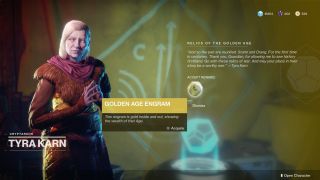
Noseworthy elaborates. “Instead of you having to understand all these different currencies or in and outs, it’s, ‘Well, I’m just going to play this destination, and this destination is going to have a set of armour for me and some specific weapons.’ I might play a bit there in September, I might play a bit there in October, I might play a bit there in March, but ultimately I’ll be working towards that set of armour and weapons and the game’s going to track it for me.
“In fact, I don’t even have to think about the Tokens. You could completely ignore the Tokens entirely, and then eventually the NPC’s going to beckon to you and be like “Hey, you forgot something – you should come and see me.” And you’ll come see him and he’ll be like, ‘Here’s a bunch of stuff!’”
That resonance with absent-minded, slow-burn play is the Token system’s secret weapon. The first Destiny was billed as a game that would deliver meaningful progress whether you played for 30 minutes or four hours, but in truth you’d have to add up a lot of 30 minute sessions to feel accomplished.
It was later described as a video game hang-out bar, a socially-driven online space where you could meet up with good friends, shoot bad aliens, chat shit, and kick back. And Destiny was brilliant for that. But in reality, such pressure-free hijinx were enjoyed most by those who had already made it to the top tier. Destiny was easy, as long as you could work hard enough at it. And, as Noseworthy intimated up top, to understand Destiny at any given point, you really had to have grown alongside it from the beginning.
Two parallel paths, two very different destinations
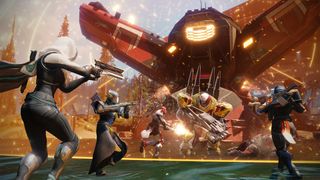
But it turns out that Destiny 2 was quietly doing just that from day one, during a parallel development process where the first game’s tribulations directly shaped its sequel’s more democratised solutions. Production began “right after Destiny One shipped”, Destiny 2 being treated throughout its development as a vessel for every great idea, innovation, and upgrade that the first game inspired, but could not deliver itself.
- Destiny 2 - the best weapons and how to get them
- Destiny 2 - every piece of Exotic armor to kit out your Guardian
“With Destiny 2 we had a lot of time to react to Destiny One, and often the challenges you see with the live game, and the fixes, some of them can be really easy. Like, ‘I’ve just got to turn this number down, everything will be great!’ And other times it’s like ‘Wow, we have to really think about what this system is doing, what kind of behaviour it’s generating, the experience people are having. And is there a better way to get the outcome that we wanted?’ And that might mean really rethinking how something works, and so in some cases the right new design that we wanted was like, ‘Well, that’s going to be so transformative and change so much, we’re not going to do that until Destiny 2.’
“So in some cases, the things you do with the live game are like the small tweaks, the small mods you can do pretty quickly and test quickly. But if you have to completely change the economy like we did with Destiny 2, that’s something that’s going to take several more years to build and iterate upon.”
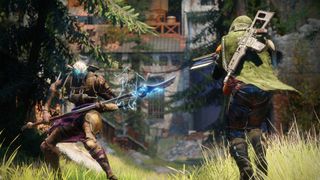
Not that Destiny 2 is simply about the big structural changes. As has been cited many times when comparing Destiny’s success to a few of its later, would-be competitors, the sheer quality of its moment-to-moment, FPS play is as important as anything. In fact, it could be argued that its flowing malleability is key to keeping the game fresh over long-term, repeat plays. Noseworthy, unsurprisingly, seems fully aware of this.
“I think at the core of Bungie, and certainly of a Destiny game, we’re trying to make just the best-playing action game that you can get your hands on, right? And that means we’re not going to rest on our laurels and say ‘You know, this worked in 2014, let’s just stick with that.’”
Some, of course, have questioned whether the sequel’s simplified skill trees - which lock subclass skills to pre-set clusters rather than allowing full, player-driven customisation - are an accessibility step too far, actually hampering Destiny 2’s combat possibilities. But Noseworthy states the decision was made to give every player a taste of divergently optimised, effective class-building, before allowing the willing to go deeper with gear load-outs . That stuff is certainly there is you go digging, even if a little harder to find than before. And interestingly, there's a possible hint at greater complexity to come as Destiny 2 grows with its audience, as Noseworthy reiterates the desire for Destiny 2 to be a game of self-explanatory depth, or “at least begin as” that.
But regardless of what the future of the meta-game might hold, the mechanics of Destiny 2’s pure, immediate action got an unmistakable upgrade.
Shooting for a world with greater resonance
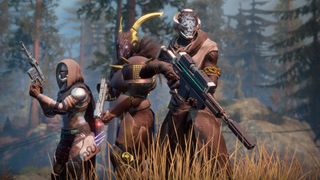
- Destiny 2 Crucible multiplayer: How each mode works, and how to win
- Best Destiny 2 Easter eggs: I don't have time to explain why
While AI was tweaked, shooting was sharpened up, and the multitude of small feedback elements that make Bungie guns feel as they do were refined and added to (“In Destiny One, that might have been fourteen [feedback elements], and now we’ve made it twenty-one different sequences”), the dynamism and scale of the combat sandbox gained a sizable boost. Destiny 2 is a game unshackled from previous hardware, just as it is unshackled from past design complexities.
Speaking of the jump to current-gen only consoles and PC, Noseworthy tells me,
“At Bungie we really want to use the horsepower of technology not to just make things prettier but to make things better, to create player experiences that we couldn’t do before. So having a bigger world, having it more populated with things to do and find… Those [reduced] memory limitations don’t just let you put more triangles in the world; they let you put more stuff in the world so that there’s more things to find. There’s more ambient events that can be triggered, there’s more life in the world.
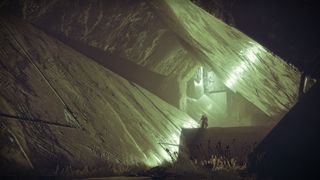
“We have larger spaces than Destiny One, and there are more players in them. The throughput of AI into those spaces is greater, and so when you’re playing in a Public Event now it’s quite common you get six or seven players in there, there’s a lot going on and it’s pretty chaotic, right?”
Those instances, of which there are many, perhaps sum up Destiny 2’s directed evolution as well as anything. The first game’s Public Events – timed, set-piece skirmishes open to any passing player - were always fun, but rather diminished in importance as player needs progressed beyond what they could offer. But in Destiny 2, their vitality never wanes, either in the moment, or in terms of the bigger picture.
The overhauled combat, with its even more kinetic demands and greater strategic options, is often crystallised best in these frantic, amped up flashpoints, their solutions scaling and changing dramatically depending on the number of Guardians involved. The new size and potential of the game-world throws in all manner of unexpected curveballs, as does the scope of upgrading the encounters with hidden gameplay triggers.
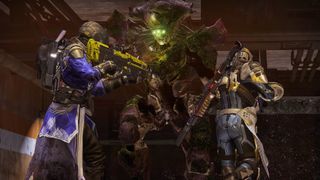
The vastly increased sense of narrative life in Destiny 2 justifies and encourages participation in a way that makes Public Events meaningful beyond their functional purpose. And binding everything together, as it does everything else in the game, the Token system ensures that whatever your level, whatever your aims, the anarchic, tactical, madcap, intelligent fun of a Public Event will always push you forward. And with live Public Event timers now appearing on the new, in-game map – both, notably, large additions to the Destiny design template, apparently pulled from player initiatives during the first game – plotting your path to advancement couldn’t be more straightforward. It’s all very scrutable, in fact.
It’s been a long, occasionally hard road to Destiny 2, but it transpires that Bungie has been paying close attention to every bump along the way, in order to assemble a vehicle for a much smoother ride going forward. The future is bright, illuminated with newfound clarity and purpose. But most crucially, this time, the horizon is going to be a whole lot easier for everyone to reach.
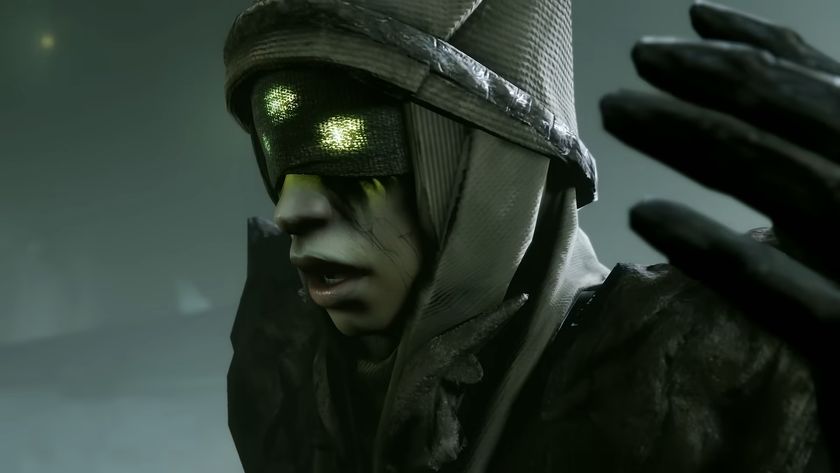
Destiny 2's new Episode suggested the upcoming Apollo expansion will launch on July 15, but that date has mysteriously been scrubbed from the game
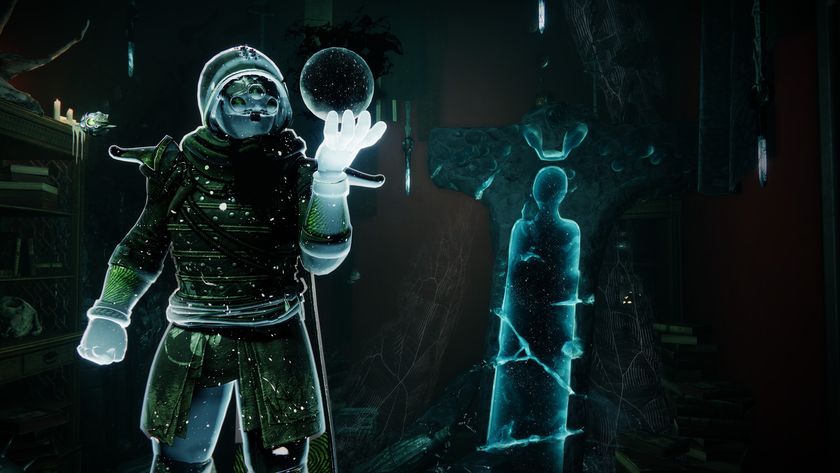
Bungie yanked Destiny 2 servers offline for emergency maintenance as Episode 3: Heresy got off to a rocky start, but it looks like we're back in business
Most Popular






